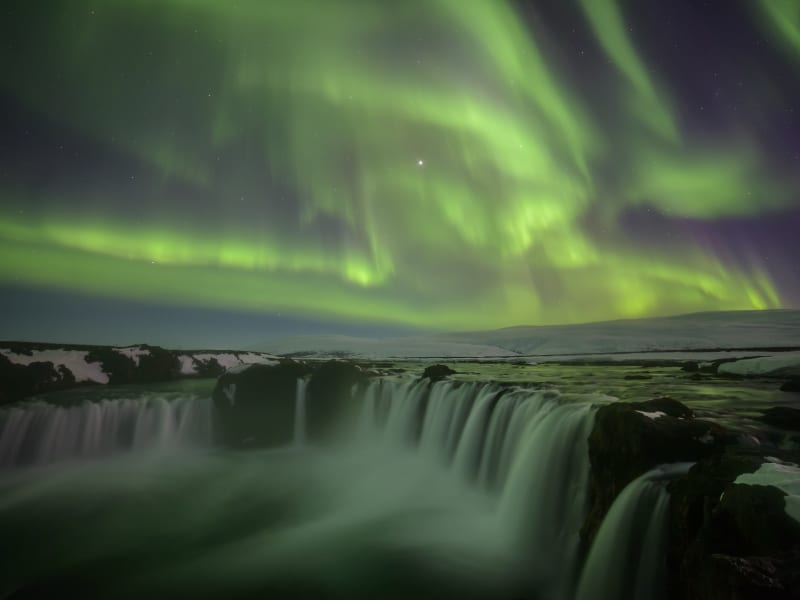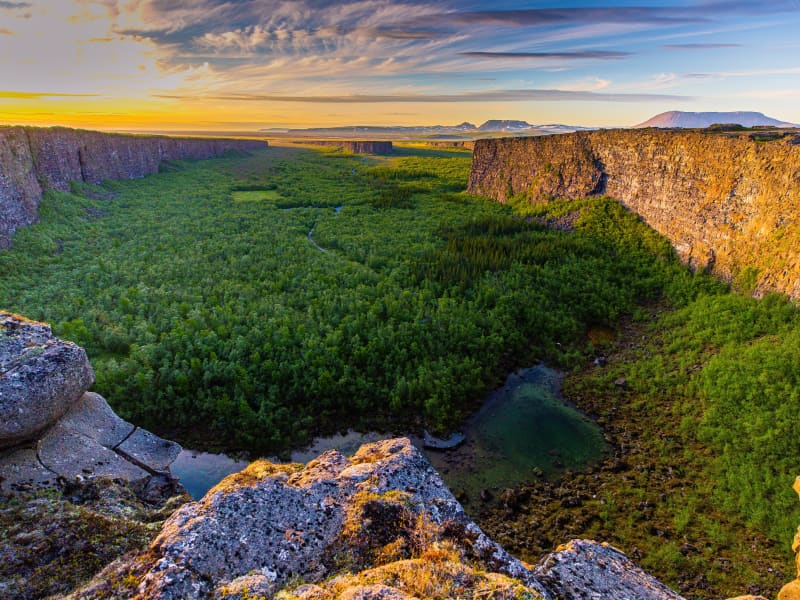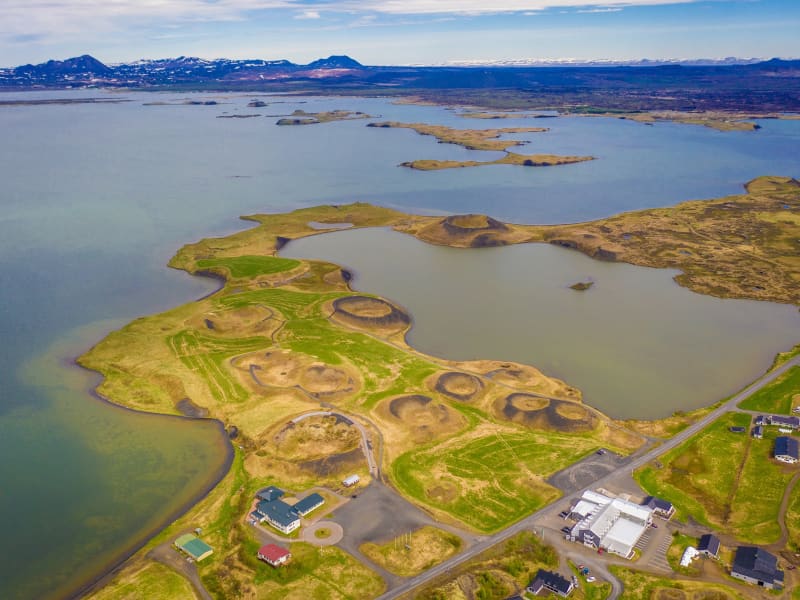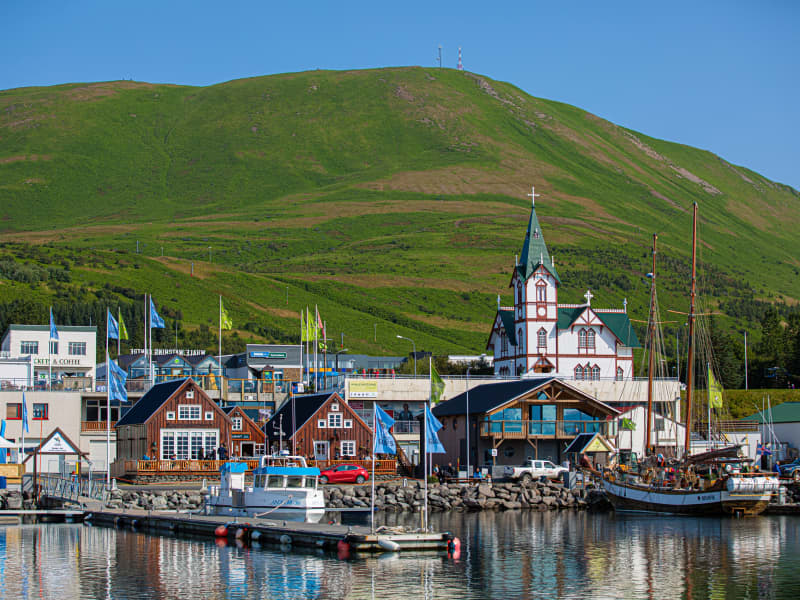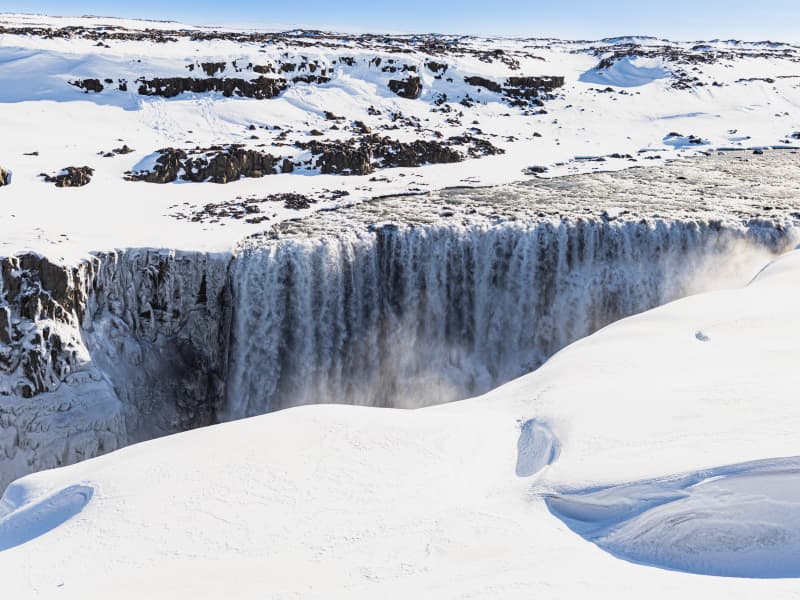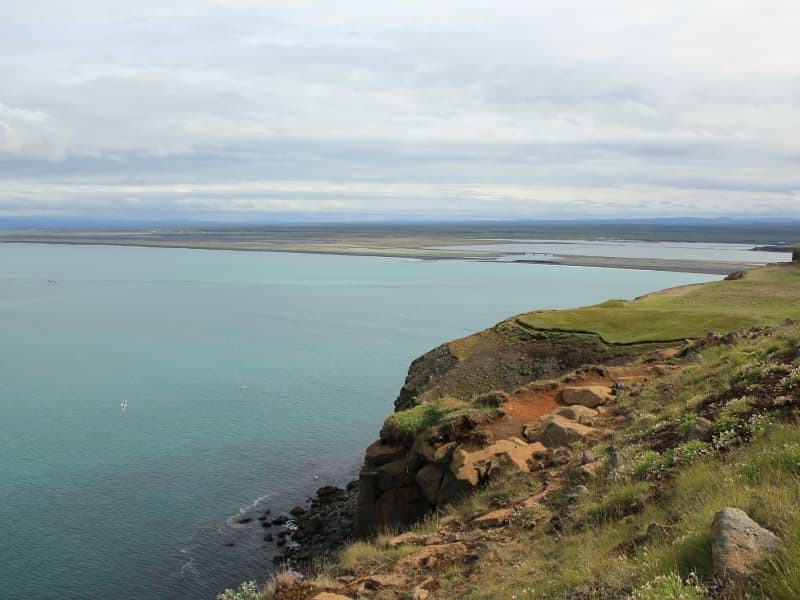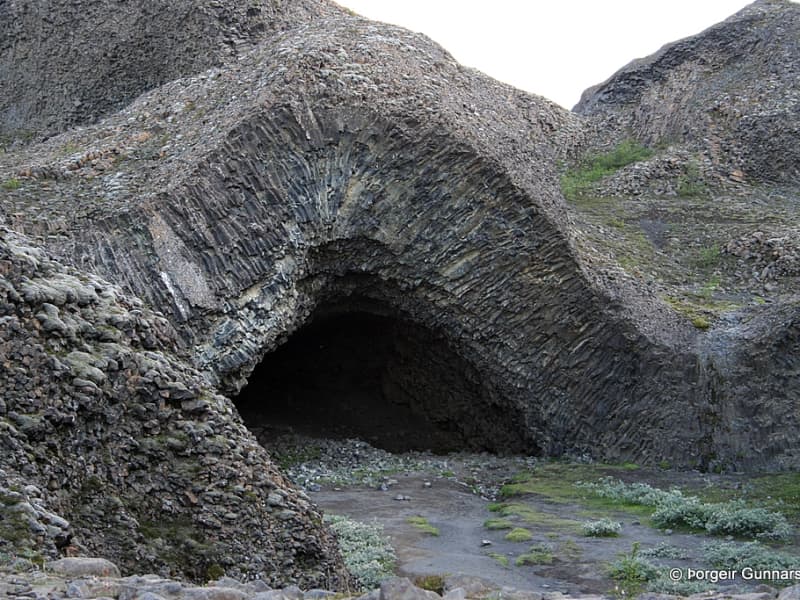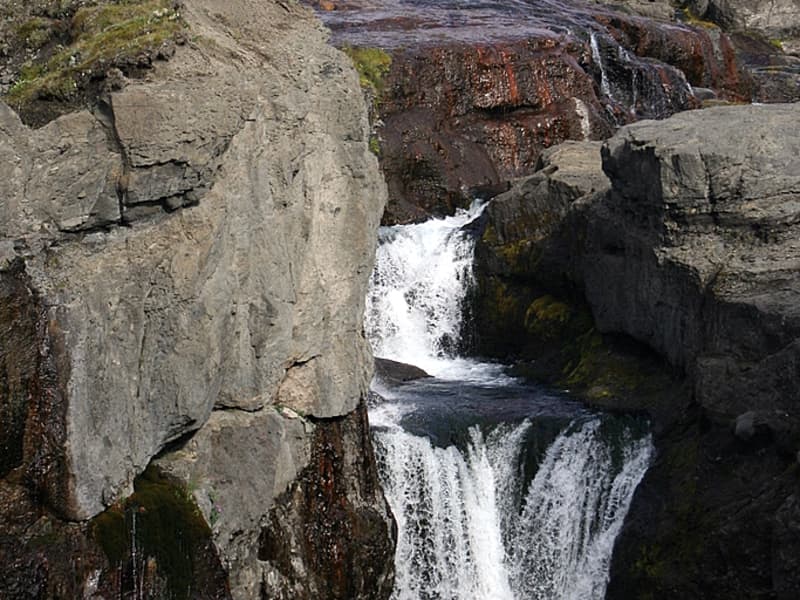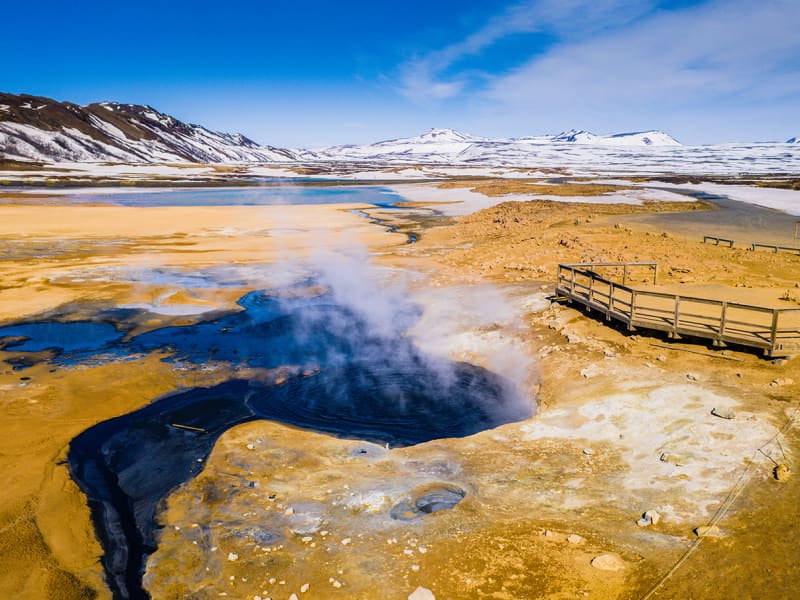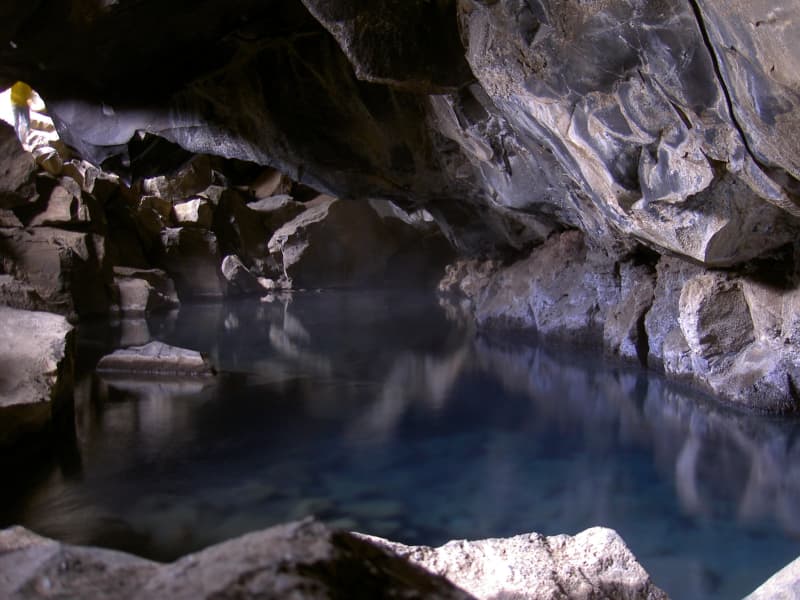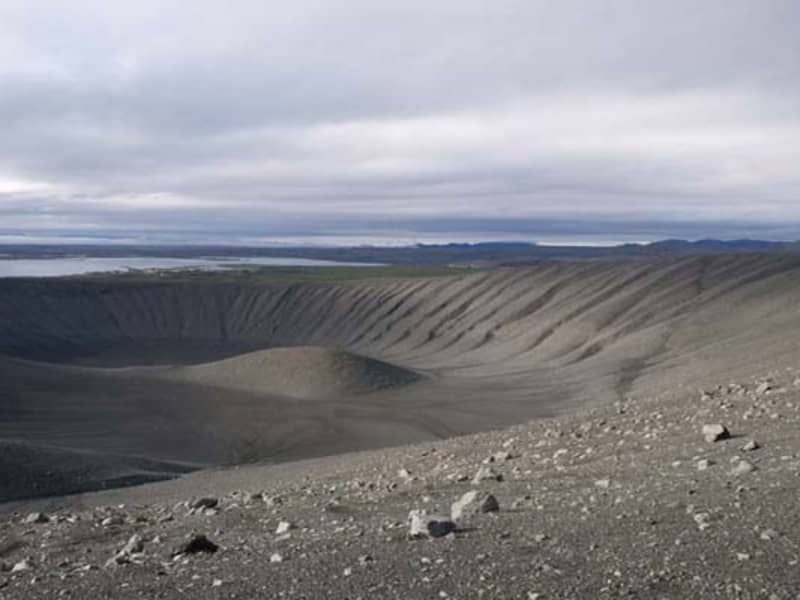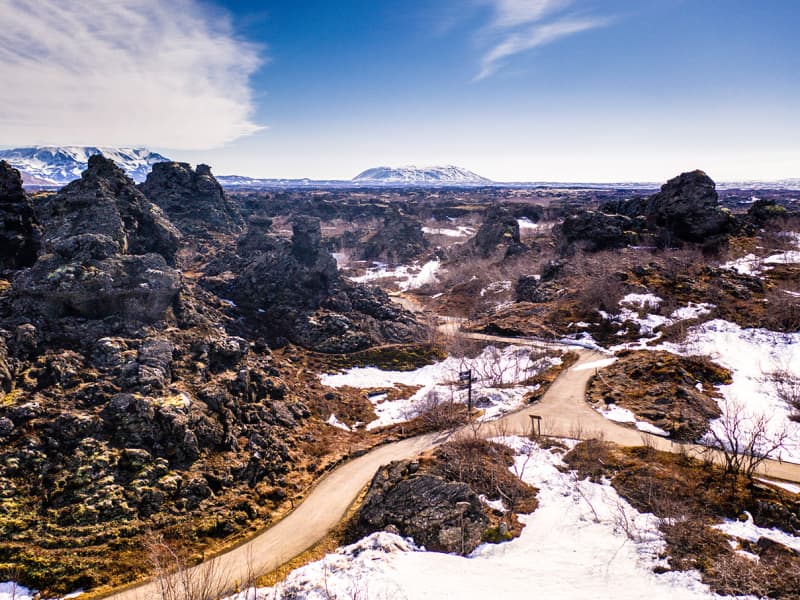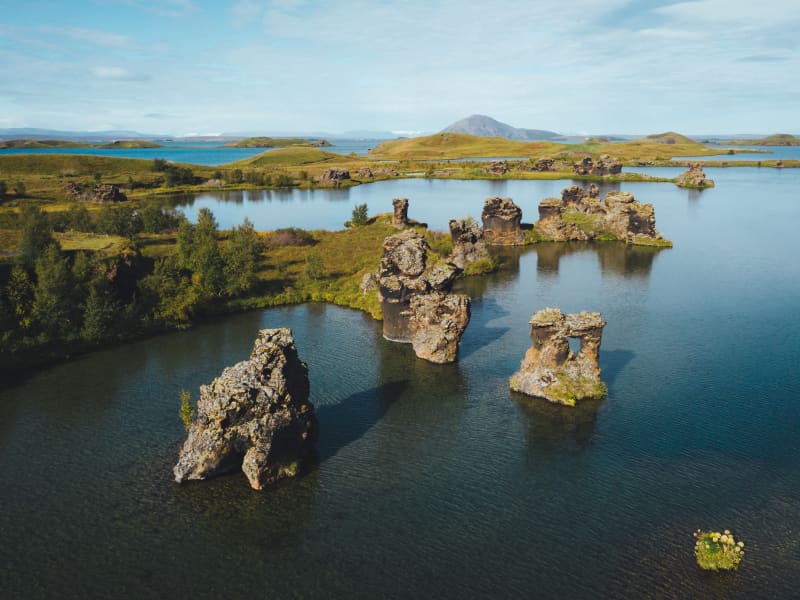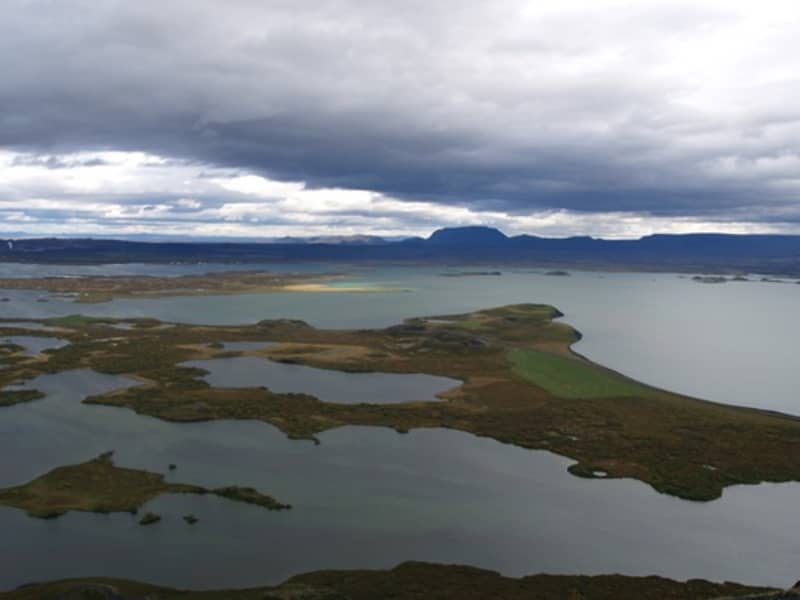
The Diamond Circle can be described as a magnificent circuit of 250km in the Northeast of Iceland, which includes some of the most stunning sights and spots for unearthly landscapes.
The Diamond Circle has 5 key destinations which include the historical and picturesque Goðafoss, the unearthly blue and green landscapes of Lake Mývatn nature paradise, the uncontrollable white energy of Dettifoss the most powerful waterfall of Europe, the crescent-shaped wonder of Ásbyrgi canyon and Húsavík the buzzing whale capital of Iceland with the deep blue seas ahead.
The Diamond Circle offers even more. Discover the astonishing valley of Vesturdalur with the bizarre rock formations of Hljóðaklettar; the otherworldly volcanic fields of Krafla, the geothermal area of Hverir and the black lava formation at Dimmuborgir.
On the Diamond Circle, you could even find some of the hidden corners and forgotten spaces which are just as surprising as the most famous ones: The beautiful Tjörnes peninsula which hides fossils and bird nests, the lush valley of Hólmatungur and the lesser-known locations around Mývatn such as the circular explosion crater Hverfjall and the turquoise warm pool in Grjótagjá.
The Diamond Circle truly is not only a circuit of 250km. It is the chance for an epic and unforgettable adventure that is waiting for you.
